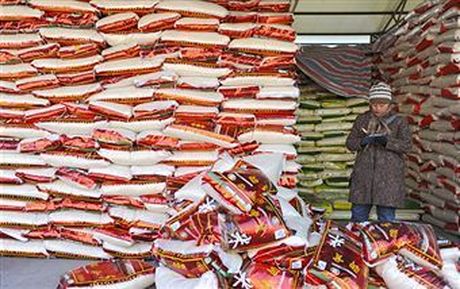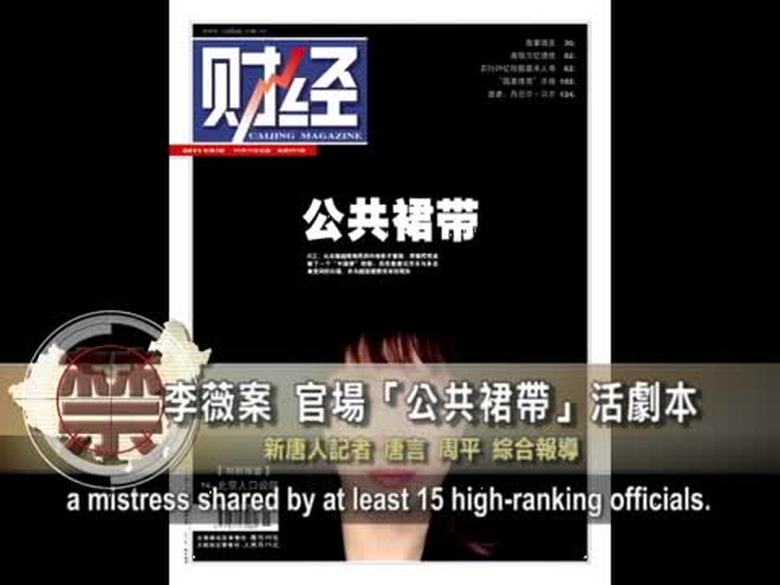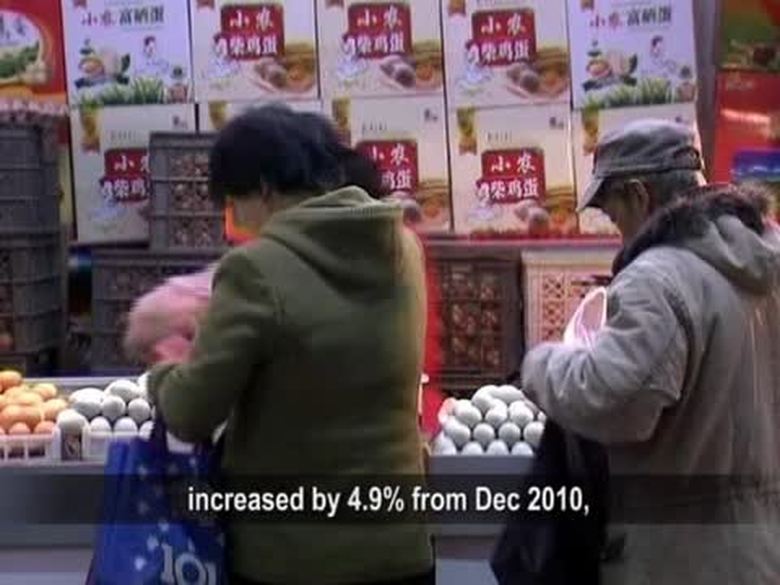【新唐人2011年2月15日訊】中國大陸物價節節上升,中共為了維穩,竭力要穩定食品價格以控制通貨膨脹。然而,中國北部降水量稀少,嚴重旱情得不到緩解,夏季小麥產量面臨危機;而旱災也有向南部蔓延的趨勢,影響全國農作物收成。中共抑制糧價維穩恐怕無效,物價上漲壓力仍將持續。
自去年9月底以來,山東大部分地區近140天基本無有效降水,發生嚴重的秋冬春連旱。9月底到今年1月底,山東省纍計平均降水量僅12毫米,比常年偏少85%。大陸媒體報導,如果到2月底仍然沒有大範圍有效降水,全省氣象乾旱將達到200年一遇,部分城市會達到500年一遇;如果三月底仍無大範圍有效降水,全省氣象乾旱等級或達到千年一遇。
據了解,2月9號到11號,中部和東部大部分地區將有雨雪天氣,但河南、江蘇北部、安徽北部這帶地區降水量比較小,對旱區旱情緩解的作用十分有限。
安徽阜陽的農民對海外記者表示,當地有四個月不降雨,原本是盛產小麥的地方,如今小麥被渴死,麥田如荒地。當地沒有水庫,目前大大小小的溝、河都已經乾枯見底,農民面臨小麥絕收,倒貼本錢購買糧食的境況。
雪上加霜的是,北方的麥區旱情正向南方省份蔓延,湖北省農業廳初步統計,截至目前為止,湖北省已有800多萬畝農田受旱。自去年11月以來,湖北省西北、東北、江漢平原北部降雨量僅13到24毫米,與歷史同期相比偏少六到八成。
美國《紐約時報》8號報導,聯合國糧農組織已經發出警告,作為世界最大的小麥生產國,中國正面臨嚴重乾旱,而這可能給世界糧食市場造成影響。如果中國被迫從國外進口糧食,將對世界糧食市場產生巨大衝擊。
此前,聯合國糧農組織發表報告說,今年1月,全球食品價格指數連續7個月上升,超過2008年「糧食危機」峰值,為1990年以來最高,糧農組織並就中國乾旱可能對糧食價格的影響發出預警。
今年春節後首個交易日,小麥、玉米和水稻三大糧食期貨大幅上漲,小麥期貨更是出現了罕見的漲停行情。玉米和稻谷期貨跟隨小麥上漲,其中玉米主力合約單日上漲2.23%,早秈稻上漲2.31%。隨後的兩個交易日,資金炒作農產品的熱情不減。
而《自由亞洲電臺》報導,湖北省農業廳辦公室的官員表示,目前「油菜災情」比小麥嚴重。
據《廣州日報》消息指出,糧食價格上漲已經傳導到了終端飯館、市民餐桌上。去年每斤1.98元的東北大米,今年已經漲了三成,賣到了每斤2.65元。而一袋麵粉價格由半年前的70多元漲了15%,達到80多元。
中證期貨農產品分析師麥兆銘也認為,長期來看糧食價格易漲難跌。而短期糧價的暴漲可能導致1月份的消費者指數(CPI)可能超過5%。
新唐人記者吳惟,李若琳綜合報導。
Drought Jeopardizes Chinese Wheat Production and Heightens Inflation Pressure
Commodity price in China is escalating.
In order to maintain stability, Chinese authorities
are trying desperately to control prices
so as to control inflation.
In northern China, however, rain becomes scarce
and draught continues.
Wheat output in the summer is facing a crisis.
Draught is spreading to the South and
will affect the nation』s harvest.
The effort to suppress price of rice may be in vain
and the pressure of inflation will continue.
Since last September, there has been no effective rain
for 140 days in most of Shangdong Province.
Serious draught occurred in autumn, winter,
and spring in a row.
From late September to late January,
the ccumulative average precipitation is only 12 mm
in Shandong Province, 85% less than the average year.
Mainland media reported that
if there is no effective rain by the end of February,
the province will have a meteorological drought
once in 200 years.
Some cities will have a draught once in 500-years.
If by the end of March, there is still no effective rain
in large areas,
the provincial meteorological drought will reach
once in a 1000 years.
Sources said that from Feb 9 to 11, rain and snow
hit middle and eastern area of China,
but still not much rain in Henan, north of Jiangsu,
and north of Anhui.
It cannot effectively alleviate the draught.
Farmers from Fuyang, Anhui, told overseas reporters
that there was no rain for 4 months in the local area
and wheat crops died in the wheat-rich area.
Wheat field became a wasteland.
There is no reservoir in local area.
Rivers and ditches dried up.
Farmers will have to spend money to buy food.
What』s worse is that the wheat area draught
in Northern China is spreading to the South.
Statistics by Agriculture Department of Hubei
show that so far 1.3 million acres of farm land
have been affected by the draught.
Since last November, rain only reached 13 to 24 mm
in North-West, North-East of Hubei Province and
Jianghan Plain,
60% to 80% less than the previous years.
New York Times reported on Feb 8, FAO has given
a warning that as the biggest wheat producing country,
China is facing serous draught and may affect
world food market.
If China is forced to import food from abroad,
the world grain market will be seriously hit.
Earlier, FAO published reports saying last January
is the 7th month of rising food price index and
it has surpassed the peak price in 2008 Food Crisis,
the highest since 1990.
FOA gave an early warning of the impact that
China』s draught has brought to the food prices.
On the first trading day after Chinese New Year,
wheat, maize, and rice futures surged and
wheat futures reached a rare stock limit.
Maize and rice futures surged with wheat.
Main corn contract rose 2.23% for the day and
early rice contract rose 2.31%.
In the following two trading days,
speculation on agricultural capital kept rising.
Officials from Agricultural Dept of Hubei Province
told RFA that the current “canola disaster”
surpasses “wheat disaster.”
Guangzhou Daily reported that food price rise
has spread to restaurants and dinner tables.
North-Eastern rice has reached 5.3 yuan a kilo,
30% increase from previous 3.96 yuan a kilo.
Price for a bag of flour has reached over 80 yuan,
a 15% increase from six months ago.
Mai Zhaoming, an agricultural future analyst
from CSI said that on a long term basis,
food price is easy to rise and hard to drop.
The food price surge on a short term basis
may lead to Jan. CPI rise over 5%.
NTD reporters Wu Wei and Li Ruolin
























